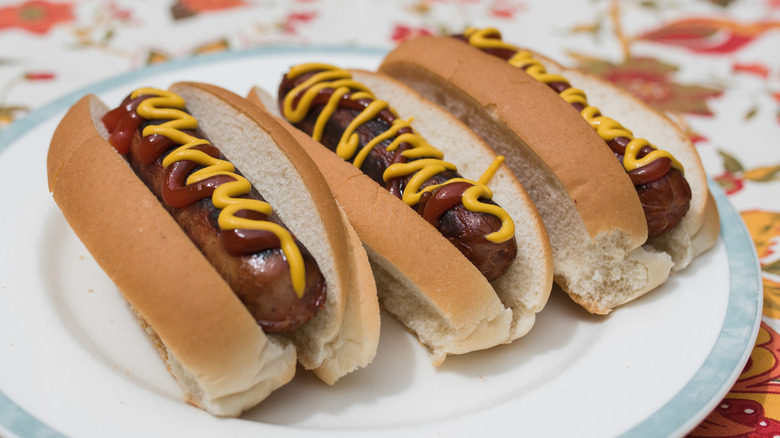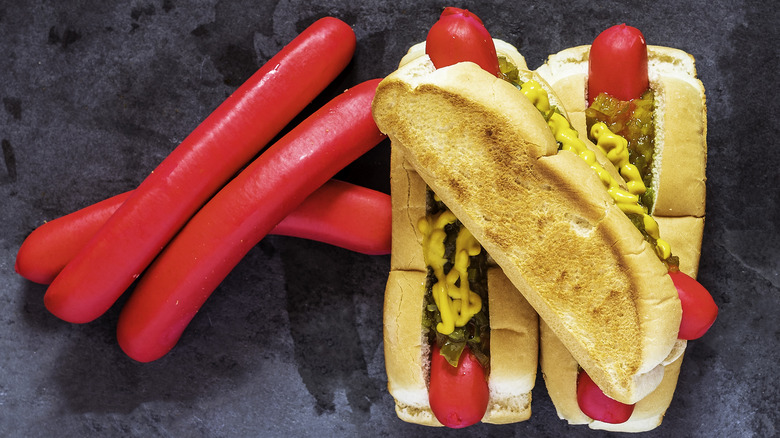The Useful Difference Between Side- And Top-Sliced Hot Dog Buns
If you grew up anywhere other than New England, there's a reasonable chance you had no idea hot dog buns come in two styles — side split and top split. In general, it's side-split that you'll find throughout the United States; these are, as you'd imagine, split down the side. They are perfectly functional, but New England-centric top-sliced buns have a leg up when it comes to stability. Because they are split on top, they have a flat bottom that keeps them standing upright on a plate. That means the filling, whether it's a hot dog or lobster salad, stays inside the roll, right where it's supposed to be. Confused? Imagine a regular store-bought hard taco shell. Now imagine the flat-based stand-and-stuff variety General Mills patented in the early 2000s. Get the picture?
In an interesting twist, lesser-known top-split buns actually pre-date the more common side-split variety. And the inspiration had nothing to do with hot dogs. In the 1940s, chefs at Howard Johnson's, the once influential and now-defunct fast-food restaurant chain known for its iconic orange-tiled roofs, were searching for the perfect sandwich roll to fill with its popular fried clam strips (a New England favorite.) They wanted something stable that would stand up on a plate, and asked Maine-based baking company J.J. Nissen to come up with a solution. The result: New England's signature top-split buns. But it wasn't easy. The stand-up buns required a bit of ingenuity in the form of a specially made baking pan.
New England hot dogs stand up on their own
A typical New England-style hot dog baking pan is oblong and its bottom is ridged in a series of peaks and valleys. As the bread bakes, the peaks separate the dough, dividing it into 10 pull-apart buns, which brings us to another perk of serving your pups à la New England. Because the buns are separated after cooking, the sides are primed for a butter grilling. This is likely another reason they became Howard Johnson's go-to choice for clam rolls and hold place of honor as the preferred option for an authentic New England lobster roll. Plus, they just look good. "It's amazing how you can make a presentation with a top-sliced roll — whether it's with lobster or just a hot dog because the roll sits up on its own," Mike McCall, president of Lepage Bakeries and Flowers Foods of Maine, a purveyor of New England-style hot dog buns, told the Boston Globe in 2013.
The side-split rolls prevalent in the rest of the United States — and a key component in the Michigan hot dog — didn't make their debut until the 1950s. Before Howard Johnson's enlisted J.J. Nissen to create its signature top-split, flat-bottom roll — and a pan to accommodate the design — the only alternative in a mass-production setting was to machine-slice hot dog rolls all the way through, creating a top and a bottom sandwich-style bun. The mid-20th-century invention of the mechanical side slicer made the hinged side-split roll possible.

